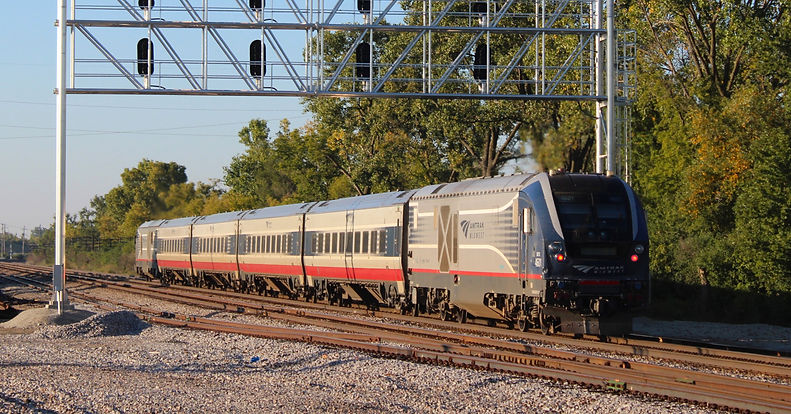Chicago Hub: Report Details Model for Midwest Rail Renaissance
A new report from the Chaddick Institute for Metropolitan Development details how Amtrak's Chicago hub is leading to continued growth of rail travel in the Midwest. It also details how under continued success seats are selling out and new rail coaches and routes are likely needed.

September 27, 2025
Ryan Pecaut
Chicago Union Station, a historic centerpiece of American transportation, is at the forefront of a major passenger rail resurgence, according to a recent report from the Chaddick Institute for Metropolitan Development. The "Chicago Hub," which serves as the nexus for numerous state-supported Amtrak routes, is a powerful example of what is possible when demand for regional rail travel is met with strategic investment and planning.
The report, titled "Growth Spurt: The Outlook for Chicago's Intercity Rail Traffic Through 2030," reveals that the Chicago Hub is a clear leader in traffic growth compared to other major regional hubs in the U.S. Ridership on its state-supported trains saw an impressive 8% increase in the first nine months of the fiscal year, comfortably outpacing economic growth in Illinois. This success is attributed to several key factors: the introduction of new services like the Borealis train to St. Paul, ongoing improvements to Chicago Union Station and rail infrastructure, and the appeal of rail travel as a convenient alternative to other modes of transportation.

This growth is a testament to the power of state partnerships. The report credits the financial support from state transportation departments in Illinois, Indiana, Michigan, Minnesota, and Wisconsin for sustaining the regional network. Moreover, new Siemens-manufactured Venture coaches and upgraded stations have enhanced the travel experience, further attracting riders.
A key advantage of Midwest state supported routes is their ability to run a shared pool of coaches and engines in the region thanks, in part, to work via the Midwest Interstate Passenger Rail Commission.
While the future is bright, the report cautions that success has created its own challenges. The increasing popularity of rail travel has led to high "load factors"—a measure of seat utilization—which are now higher in the Chicago Hub than in any other comparable region. This has resulted in trains regularly selling out, particularly during peak travel times, which could slow future growth if not addressed.
The study’s author, Joseph Schwieterman, notes that the solution is to continue investing in capacity. This includes acquiring more coaches and exploring new service expansions. The report projects that, with these continued efforts, ridership in the Chicago Hub will surpass pre-pandemic levels and grow another 10% by August 2027.
The full report can be found here: Growth Spurt: The Outlook for Chicago's Intercity Rail Traffic Through 2030

Ryan Pecaut
Ryan Pecaut is the Communications Strategy Lead at All Aboard Ohio
ABOUT ALL ABOARD OHIO
All Aboard Ohio is a non-profit, member-based organization dedicated to promoting improved public transportation and passenger rail service throughout the state.
Founded in 1973 and incorporated as a registered 501c-3 in 1987, All Aboard Ohio has spent more than 50 years advocating, educating, and working towards our goal of a connected Midwest
All Aboard Ohio is a 501c-3 nonprofit with over 50 years of advocacy work, advocating for improved public transportation and passenger rail service in the Midwest
©2025 by All Aboard Ohio
Get in Touch
3136 Kingsdale Center,
#112 Columbus, OH 43221
Federal Tax ID: 31-1066182








